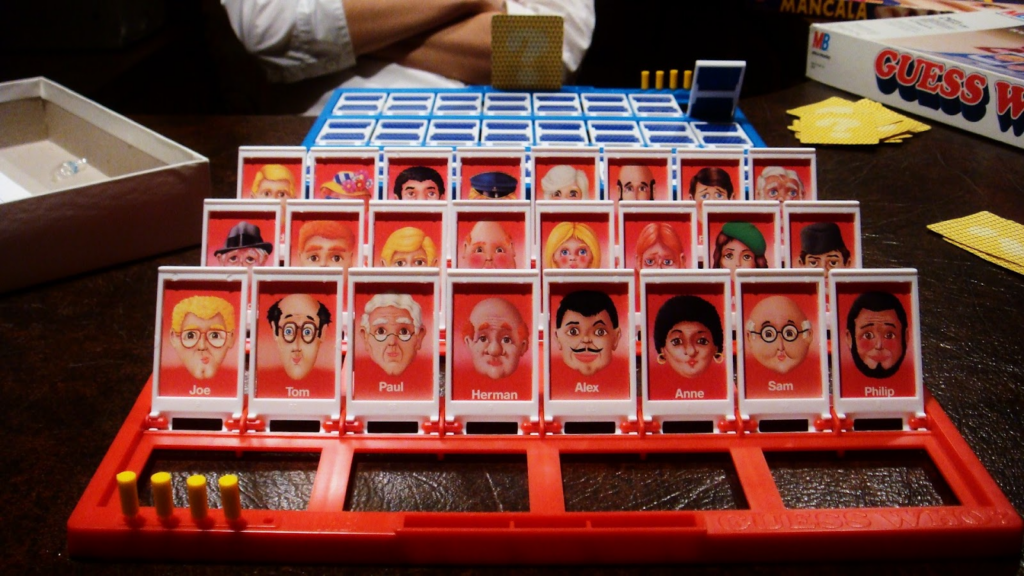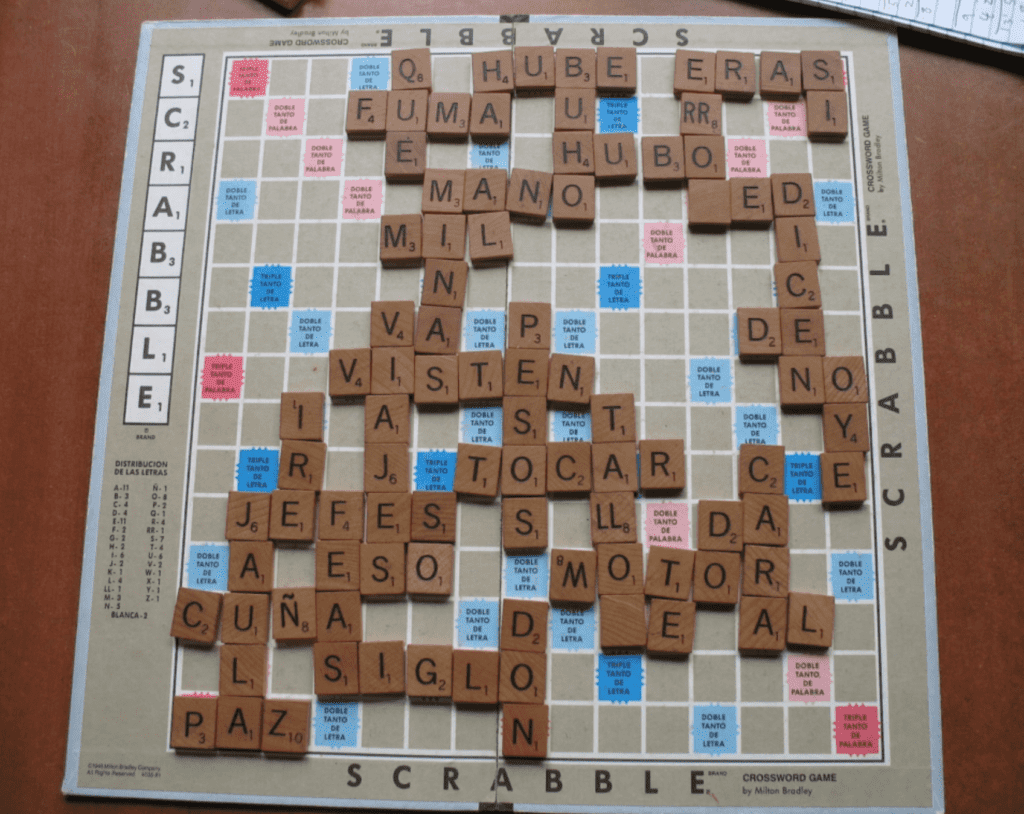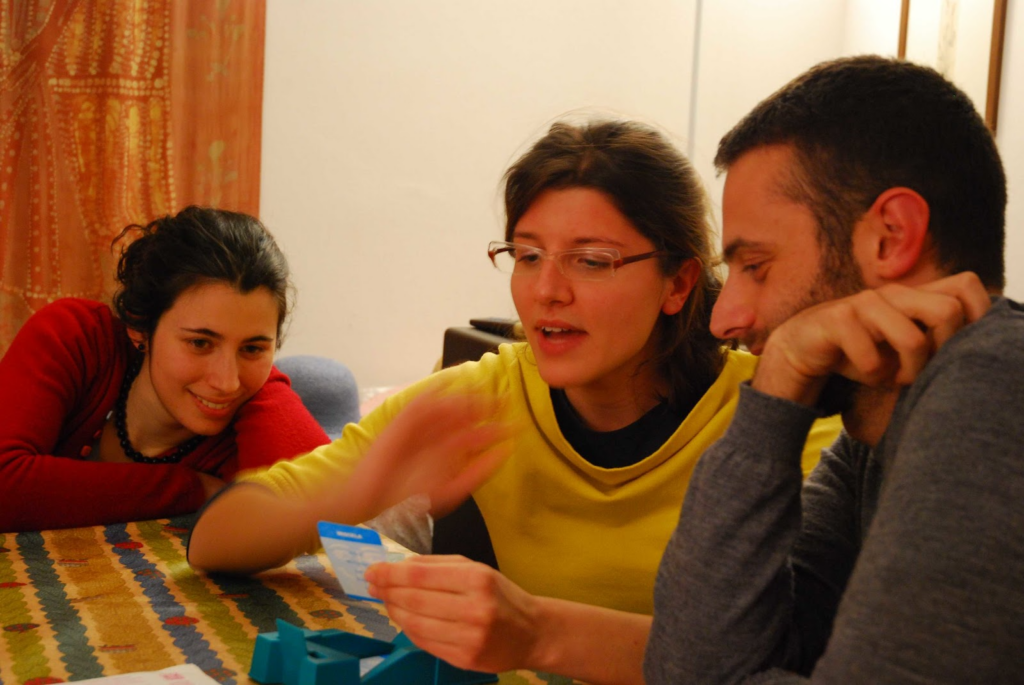
Top 5 Spanish Grammar Games to Improve Your Language Skills
Are you ready to take your learning to another level? Today we will share our top 5 Spanish grammar games you will love!
Using games while learning a new language brings many benefits and can help you acquire the necessary knowledge to master it faster.
With these games, you’ll practice new concepts that will deepen your knowledge. They will help you feel more comfortable speaking in Spanish, and little by little, you’ll see that fluency is just around the corner.
So, join us and get to know our top 5 games to improve language skills.
Join 559 million people on the planet who speak Spanish!
Sign up for your free trial Spanish class today.

Benefits of Learning Spanish Grammar Through Games
Learning Spanish through games has tons of benefits.
If you use games as part of your learning process, you’ll definitely have fun. Additionally, they will keep you focused, excited, and motivated.
Learning conjugations, verbs, syntax, and complex grammar rules is a difficult task, but games can turn the experience around!
They’ll help you expand your vocabulary, associate new terms with their meanings, and increase your creativity.
How fun!
You will also improve your speaking, listening, writing, and reading skills.
Grammar games are not only entertaining, but they’ll subconsciously help you analyze and understand new concepts.
So, grab your controller and your joystick! It’s gaming time!
We recommend: 10 Online Interactive Games in Spanish for Kids
Top 5 Spanish Grammar Games and Activities
Play, laugh, and focus with the following Spanish grammar activities and games, and you’ll see that your Spanish will improve in no time.
Let’s start!
1. Scattergories in Spanish – Beginners (A1, A2)
Scattergories is a classic game in Latin America. Depending on the country, it has a different name like Basta, Alto el lápiz, Stop, or Tutti Frutti.
To play it you only need sheets of paper to write on, pencils, quick thinking, a timer, and a group of friends or relatives willing to compete. You can play the game with little kids too!
The objective of this game is to write as many things that start with the letter and category a player chose to play with before the time runs out!
The options are endless! Fruits, vegetables, countries, objects, names of people, etc., but remember, they must be in Spanish.
We suggest writing the categories on pieces of paper, folding them, and putting them away in a small container or bag.
Do the same with the letters of the alphabet so you can choose both randomly.
When the first game is over, everyone must read the words they wrote. If two or more players have written the same word, they must all remove it from their lists.
All players must read their lists. After you’ve crossed out the repeated words, players must count the remaining words and then start anew using a new letter and category.
Players must decide how many games they’ll play. In the end, everyone must add up their points to find out who the winner is.
This game will help you to practice your vocabulary. You can also practice your writing skills and learn how to spell words correctly.
Because your time is limited, we suggest you put all the easy words first since the rest of the people will surely use them and thus will affect your score. Then, write down the rarest words to add more points and beat others.
In other countries, they play it with some variations where you fill out 5 or more categories at the same time. It’s really fun!
2. Guess Who? – Intermediate (B1, B2)
If you haven’t played this classic game yet, you’re missing hours of fun!
The objective of the game is to discover the identity of the character you selected. You only need Post-it notes, pencils, and people who want to join in the fun to play it.
Each contender must write the name of a famous person or fictional character on a Post-it. No one can see what you wrote, and you can’t see what other people wrote.
Then all players must exchange their post-it with other players so one keeps their own.
Now it’s time to have fun!
Each player must ask questions about the character to discover their identity. But here’s the trick, they must be yes-no questions.
Here are some examples:
¿Soy una mujer?
Am I a woman?
¿Soy personaje ficticio?
Am I a fictional character?
¿Vivo en Estados Unidos?
Do I live in the US?
With this game, you can practice and reinforce the grammar rules and how to use articles correctly.
You must focus on your questionnaire. Be specific.
So, for example, if someone answers “yes” to “Am I a fictional character?” then you can ask, “Am I a fictional character from a book?”.
If you wish you can also buy the board game here.
You must read: 40+ Online Spanish Games for Kids That Are Educational and Fun
3. Sentence matching – Intermediate (B1, B2)
This game is a well-rounded one, so you’ll be able to practice your writing, speaking, listening, and reading skills.
This game’s objective is to match sentences as quickly as possible while always considering the grammar rules of Spanish that you have learned.
For this game, you need blank sheets of paper, pens or markers, scissors, and friends or relatives who can help you practice. However, you can also play alone.
First, each player must write three or four sentences based on the grammar rule you want to practice.
Second, cut the sentences in half, and mix them up. Then, you guessed it, you must match the sentences!
If you’re playing with other people, you can even exchange your sentences with another person.
Nerve-racking, huh? That’s not all!
Each player must write the sentences they find on a new sheet of paper, and whoever finishes first wins!
All those lessons on verb conjugations, singular and plural, conjunctions, etc., will come in handy here!
Also, to increase the difficulty, you can print everyone’s sentences. Just remember the use the same font and letter size.
4. Scrabble in Spanish – Advanced (C1, C2)
Everyone knows this!
Different versions of this game have been made around the world and in other languages.
We think this game advanced learners because you need a vast vocabulary to truly compete.
The objective of this game is to build words with the letters you have and with the words your opponents have placed on the board.
If you can’t buy the board game, you can print it on a sheet of paper and make your own letters using thick cardboard.
Just don’t tell Scrabble we told you!
This game will help you to practice and expand your vocabulary and also better your spelling skills.
To increase the difficulty, you can make up rules like players can only write words with two syllables, or you can even choose categories.
You can ask players to say a sentence using the word they placed on the board.
Read also: 8 Traditional Hispanic Games to Play at Home or in Class
5. Taboo – Advanced (C1, C2)
And finally, we have Taboo!
The objective of this game is to guess the words described by the rest of the players. All you need are pens and sheets of paper to write on.
How do you play it? First, each person must write 5 words on a different piece of paper. Then you shuffle them and put them in a pile.
The person who starts the game must explain to the rest of the players what word is written on the card. It must be explained with complete sentences or similar words.
The person who already knows the answer raises their hand and says the word they have thought of. If they guess correctly, they keep the word, as they have won that round.
If that person was wrong, the person with the car must keep giving out clues until someone wins.
Repeat this process until the pile runs out.
Whoever has the most cards will be the winner.
Due to the complexity of explaining words with sentences, we recommend this to people with an advanced level of Spanish.
If you want to increase the game’s difficulty level, you can ask players to write down a list of words people cannot use to describe the main word.
For example:
If your main word is roncar (snoring), you can put the following four extra words: noche—night, ruido—noise, nariz—nose, dormir—sleep. People can’t use these words to describe roncar.
Watch people crumble as they try to describe the word!
This will help you find new and different ways to give information without using synonyms.
Playing Games to Learn Spanish Is So Fun!
Although the games can help you unwind and relax, you won’t be able to cover all lessons with them
Games stimulate your brain, so we highly recommend adding them to your learning process.
However, it’s important that you go to class! Now imagine if you can take Spanish lessons from a native Spanish speaker!
Don’t miss out on our 5-star Spanish program. With us, you’ll have access to real human connections, expert-certified curricula, and great teachers from Guatemala.
Sign up for a free trial class and achieve your learner-specific language goals. No credit card details are required!
Click here to check our prices and our programs available for all ages.
We’re here to support you!

Join one of the 40,000 classes that we teach each month and you can experience results like these…

“This is the best way for your kid to learn Spanish. It’s one-on-one, taught by native Spanish speakers, and uses a curriculum.”
– Sharon K, Parent of 3

“It’s a great way to learn Spanish, from native Spanish speakers in a 1-on-1 environment. It’s been fairly easy to schedule classes around my daughter’s other classes. The best value for us has been ordering multiple classes at a time. All the instructors have been great!”
– Cindy D, Parent of 3

“HSA offers very affordable, quality, one on one classes with a native speaker. My son has greatly benefited from taking classes. We have seen his confidence increase as well as his pronunciation improve, because he learns from a native Spanish speaker. HSA has quick, personal customer service. Our family has been very pleased with our experience so far!”
– Erica P. Parent of 1
Ready to learn more Spanish grammar and vocabulary? Check these out!
- The 25 Most Useful Spanish Phrases You Need to Lear Today
- 50 Useful Spanish Transition Words for Everyday Speech and Writing
- Master the 18 Spanish Tenses (and Take Our Cheat Sheet With You)
- All About Adverbial Clauses in Spanish
- Top 20 Guatemalan Words and Slang Expressions You Should Know
- The Ultimate Guide to the Differences Between ‘Pero’ and ‘Sino’ in Spanish
- A Guide to Double Negatives in Spanish
- Ver Conjugation: Free Spanish Lesson, Exercises, and PDF
- What Does it Actually Take to Become Fluent in Spanish? - August 29, 2024
- Learn About Hispanic History: Were Hispanics Slaves? - May 30, 2024
- Turn Your Life Around: From Passive Bilingualism to Fluency! - April 4, 2024










